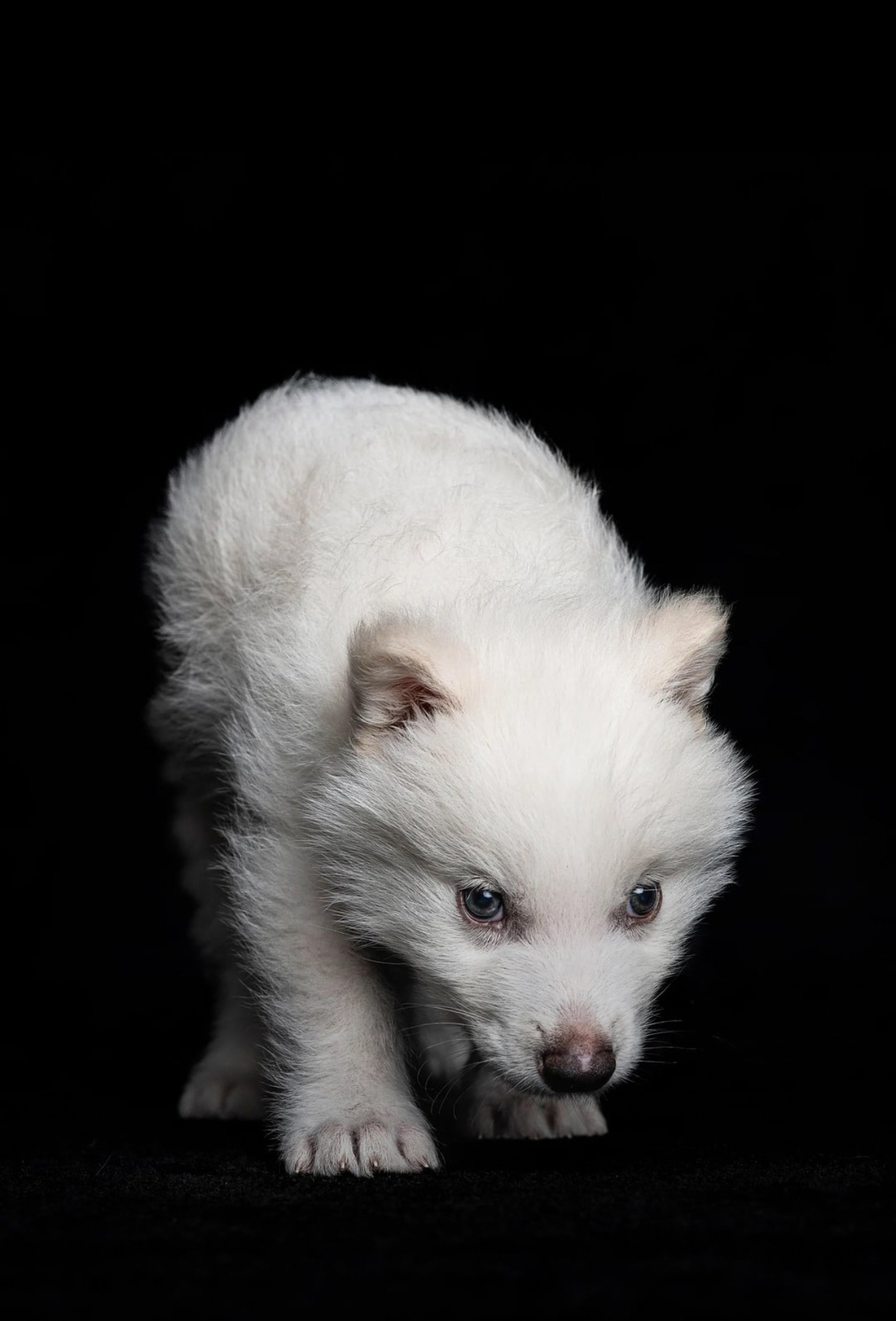There’s a snow-white wolf on the cover of Time Magazine, staring you down like it just walked out of the Ice Age. The headline reads: The Dire Wolf Returns. It’s bold. Evocative. And not quite accurate.
Here’s what actually happened.
A Dallas-based biotech startup called Colossal Biosciences claims it has brought the dire wolf back from extinction. Three puppies—Romulus, Remus, and Khaleesi—have been born in a high-security compound somewhere in the northern U.S. They’re large, white, broad-headed, and built to look like the prehistoric predator that roamed the Americas more than 10,000 years ago. According to Colossal, these pups are the world’s first “de-extincted” animals.
But they’re not dire wolves.
They’re gray wolves, genetically modified to mimic some visual and structural traits of their extinct cousin. Using CRISPR and other precision-editing tools, Colossal made 20 edits across 14 genes—targeting features like body mass, skull shape, and coat color. These pups weren’t cloned from dire wolf DNA. They were reverse-engineered from fragments and computational guesswork. It’s not resurrection. It’s simulation.
Colossal calls it “functional de-extinction.” Their chief science officer, Dr. Beth Shapiro—one of the world’s leading ancient DNA researchers—defends the claim: “We’ve succeeded in creating the phenotype of a dire wolf.” From their perspective, reintroducing an animal that looks and behaves like its extinct counterpart—whether or not its genome is identical—is enough to count.
But the scientific reality is more complicated. The dire wolf and the gray wolf diverged millions of years ago. They’re not even in the same genus. What Colossal has created is a heavily edited gray wolf—an animal that shares roughly 99.5% of its DNA with its extinct relative but still remains something else entirely. To call it a dire wolf is more branding than biology.
And that branding is no accident.
Colossal was founded in 2021 by entrepreneur Ben Lamm and Harvard geneticist George Church. Church had been toying with de-extinction ideas for years, including efforts to revive the woolly mammoth. But his work remained largely theoretical—until Peter Thiel got involved.
Thiel, the billionaire venture capitalist best known for co-founding PayPal and backing early-stage Facebook, was one of the first people to fund Church’s mammoth project. He contributed $100,000—not much by his standards, but enough to put the idea on the venture map. Thiel has long been interested in radical science, from life extension to human genetic enhancement. His libertarian worldview and mistrust of government regulation align perfectly with the ethos behind Colossal: move fast, think big, disrupt biology.
That connection matters. Thiel’s involvement is more than just a footnote. It reflects the broader ideology driving Colossal’s work—a techno-optimist belief that biology is a platform to be engineered, not preserved. To people like Thiel, extinction is just a technical problem waiting for a startup solution.
And Colossal is that startup. With more than $400 million raised and a $10 billion valuation, the company is now aggressively pursuing projects to “bring back” not just the dire wolf, but also the woolly mammoth, the dodo, and the Tasmanian tiger. They employ over 130 scientists, fund 40 postdocs, and have spun off multiple biotech ventures, including efforts to create gene-edited mice, biodegradable plastic-eating microbes, and even artificial wombs.
Lamm, Colossal’s CEO, is explicit about the company’s ambitions. The goal isn’t just conservation. It’s transformation. “We are the apex predator,” he says. “Why not use our technology for good?”
But what “good” looks like is up for debate.
While the company touts ecological restoration—rewilding habitats, reviving keystone species—it’s also producing high-concept promotional videos, selling “Jurassic Park” vibes, and leaning hard into pop culture. Peter Jackson and Paris Hilton are investors. Game of Thrones author George R.R. Martin has met the wolves. A special-effects team is building a giant frozen mammoth sculpture for the new headquarters lobby.
The dire wolf wasn’t even on Colossal’s original roadmap. It was added during a 2023 company offsite, after the team brainstormed which extinct animals could be feasibly engineered and culturally resonant. Dire wolves scored high on both. They’re a fan favorite—not just from Game of Thrones, but also Dungeons & Dragons, Magic: The Gathering, World of Warcraft, and even the Grateful Dead. Colossal knew they had a symbol on their hands.
And symbols are powerful, especially in science.
The dire wolf project progressed quickly. Unlike elephants or marsupials, canines are well-studied. People love sequencing their dogs. That genetic data made it easier to engineer traits and grow viable embryos. Colossal used dog surrogates to carry the fetuses—mutts, not wolves—and delivered the pups by C-section in October 2024. The births were streamed to company executives on FaceTime.
The animals were larger than normal wolf pups, with broader skulls and striking white fur. The color, inspired by the character Ghost from Game of Thrones, required tweaking pigmentation genes—but Colossal avoided versions that risked blindness or deafness, aiming for a healthy compromise between authenticity and viability.
Today, the wolves live on a private 2,000-acre preserve surrounded by drone surveillance and ten-foot fences. They have no pack, no elders, no natural predators. They were raised by humans. They’re not allowed to breed. They’re test subjects—biological proof that Colossal can do what it says it can.
But the science community remains divided.
Some are impressed by the technical feat—editing multiple genes at once, cloning from ancient DNA fragments, gestating new animals. Others are skeptical. Without full genomes, without behavioral traits, without natural ecosystems, can we really say a species has been restored?
Colossal insists it doesn’t matter. This is about functional replacements. About rewilding. About developing biotech that has downstream applications for conservation, human health, and even planetary survival.
And maybe it is.
Their mammoth project has already yielded a potential vaccine for a virus killing Asian elephants. Their genetic engineering work could transform fertility science. Their artificial womb technology—rebranded as “exo-dev”—could one day change how human surrogacy is done.
But it’s also worth asking: who controls this future?
Because the same tools that let us recreate wolves could just as easily be used to edit people. The same companies talking about ecological balance are also promising investors “a fuck ton of money.” And the same billionaires funding de-extinction are often the ones undermining public science and democratic oversight.
Thiel’s fingerprints may not be on every edit. But his worldview—restoration without regulation, biology as software, evolution as legacy code—is deeply embedded in the project.
So when you see that white wolf on the magazine cover, know this: it’s not a return. It’s a rebrand. The dire wolf didn’t survive the Ice Age. But in a post-natural, venture-backed, media-saturated world, its image did. And now, that image has been engineered into something new.
Something alive.
Something real—but not quite true.













Share this post